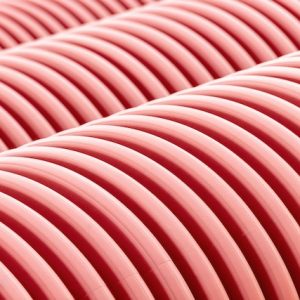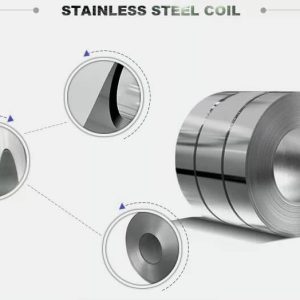Nickel alloy seamless pipes are usually more expensive than standard carbon steel or stainless steel pipes. These pipes are made with special materials that make them stronger and more resistant to heat and corrosion.
Because of this, they’re often used in industries like oil and gas, chemical processing, and power plants. The higher price comes from both the cost of raw materials and the more complex manufacturing process.
People looking for pipes that last longer and can handle tough jobs tend to choose nickel alloy seamless pipes, but they have to pay more for that quality.
Factors Influencing The Cost Of Nickel Alloy Seamless Pipes
Nickel alloy seamless pipes are more costly than many other steel pipes. The price depends on the alloy’s nickel content, how complicated it is to produce, and the supply of raw materials.
Nickel Content And Alloy Composition
Nickel is one of the most expensive metals used in pipe production. The higher the nickel content in the alloy, the higher the cost per kilogram.
Some common nickel alloys, like Alloy 625 or Alloy 825, can have more than 50% nickel by weight. Other alloying elements such as chromium, molybdenum, and iron are also added.
Each of these affects the price. For example, adding molybdenum improves strength and corrosion resistance but also increases costs.
Different grades of nickel alloy are designed for different jobs. More specialized or highly resistant pipes are often much more expensive because of the complex mix of elements.
| Alloy Type | Approximate Nickel Content (%) | Relative Cost |
|---|---|---|
| Alloy 400 | 67 | High |
| Alloy 625 | 58 | Very High |
| Alloy 825 | 42 | High |
(Source: NickelAlloySolutions)
Manufacturing Process Complexity
Nickel alloy pipes are made using a seamless process, which does not use welded joints. This process is more complicated than making welded pipes, and often involves precise heating, extrusion, and cold drawing.
Exact temperature control and clean equipment are needed to prevent defects. Each step must meet strict standards, making production slower and more costly.
Workers also need special training to handle these alloys. Extra inspection steps, like X-rays or ultrasonic testing, may be required to check for any tiny cracks or flaws.
These add to the total cost. List of key steps in manufacturing:
- Melting and forming the nickel alloy
- Extruding or piercing the material into tubes
- Cold drawing the tube to size
- Heat treatment and finishing
- Non-destructive testing
Supply Chain And Raw Material Availability
The price of nickel changes often based on global demand and mining output. If nickel mines in major countries close or slow down, the price can rise quickly.
Transport can also add costs, especially if raw materials or finished pipes travel long distances. Political actions or natural disasters may disrupt shipping and raise prices.
There are fewer suppliers for high-grade nickel alloy pipes than for standard steel pipes. This limited supply can make prices change quickly, especially if there is a surge in demand for projects like chemical plants or power stations.
Factors like tariffs, regulations, and market conditions also play a role in final costs paid by buyers.
Price Comparison And Market Insights
Nickel alloy seamless pipes often cost more than standard steel options due to raw material prices, production complexity, and demand.
Market prices also change based on location and future durability needs.
Nickel Alloy Versus Carbon And Stainless Steel Pipes
Nickel alloy seamless pipes are usually much more expensive than carbon steel and stainless steel pipes. This is mainly because nickel itself is costly.
The high nickel content raises both material and production costs. Special equipment and skilled labor are often required to make these pipes.
Below is a simple comparison:
| Pipe Type | Relative Cost | Corrosion Resistance | Typical Uses |
|---|---|---|---|
| Carbon Steel | Low | Low | Water lines, gas distribution |
| Stainless Steel | Medium | Medium-High | Food, marine, chemical |
| Nickel Alloy | High | Very High | Oil, gas, harsh chemicals |
Nickel alloys are picked for tough jobs despite their higher price. They outlast most steel options in harsh environments.
Geographical Pricing Variations
The price of nickel alloy seamless pipes is not the same everywhere. Factors such as raw material sources, import taxes, shipping costs, and local demand all affect price.
In North America and Europe, prices tend to be higher because of strict quality standards and labor costs. Countries with nickel mines or well-established manufacturing such as China and India may offer lower prices.
However, international buyers should consider freight, customs duties, and quality differences. Exchange rates can also affect the final cost.
Key Pricing Factors by Region:
- Raw material availability
- Production capacity
- Trade regulations
- Transport costs
It is important for buyers to compare total costs, not just listed prices.
Long-Term Investment Value
Nickel alloy pipes definitely cost more upfront. Still, they often save money as the years go by.
Their resistance to corrosion and heat means there are fewer repairs. You won’t have to replace them as often, which is a relief for industries that can’t afford downtime or sudden failures.
In places like chemical plants and refineries, that extra initial cost is often balanced out by less maintenance. Pipes that last longer can really make a difference in demanding environments.
There’s also the bonus of reducing waste and unplanned downtime. It’s worth pausing to consider whether the higher price tag now might actually pay off later, depending on what your operation needs most.




